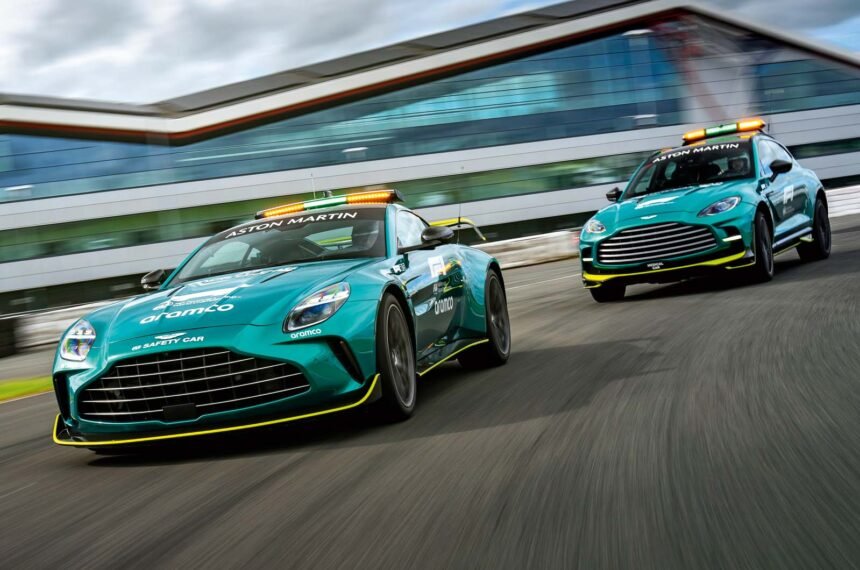Bernd Mayländer, the driver of the F1 safety car, showcases incredible skill and precision during his three laps on the track. His ability to push the limits while maintaining control, along with his quick accelerations and aggressive braking, is truly a sight to behold. Mayländer emphasizes the importance of his commitment to safety, especially when leading a pack of 20 F1 cars behind him. Despite potential frustrations from other drivers, he prioritizes ensuring a safe racing environment above all else.
In the garage, Mayländer and his co-driver, Richard Darker, prepare for race day by sitting in their Aston Martin Vantage with the engine running for at least 10 minutes before the start. The tension is palpable as they await their deployment on the track. Mayländer recalls a particularly challenging race at the Australian Grand Prix, where heavy rain led to multiple safety car deployments and 13 laps of intense driving. In such treacherous conditions, the communicative nature of the Vantage proves crucial in navigating the changing track surfaces and providing vital information to the race director.
As Mayländer takes to the track, the F1 medical car waits at the back of the grid, ready to respond to any emergencies during the race’s opening lap. Today, the medical car is an Aston Martin DBX 707, one of two models that have been in service since 2023. This powerful vehicle serves as a crucial safety measure, ensuring that medical assistance is readily available in the event of any incidents on the track.
Mayländer’s role as the F1 safety car driver is not just about leading the pack during caution periods; it is about maintaining the safety and integrity of the sport. His expertise and quick reflexes are essential in ensuring that races continue smoothly, even in the most challenging conditions. As he navigates the twists and turns of each circuit, Mayländer’s focus remains on keeping drivers safe and providing a seamless racing experience for fans around the world.







